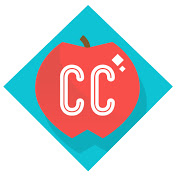For this activity choose a clear night, go outside look at the moon.
What is the moon?
The Moon is Earth’s only proper natural satellite. It is one quarter the diameter of Earth (comparable to the width of Australia) making it the largest natural satellite in the Solar System relative to the size of its planet. It is the fifth largest satellite in the Solar System and is larger than any dwarf planet. The Moon orbits Earth at an average lunar distance of 384,400 km (238,900 mi), or 1.28 light-seconds. Its gravitational influence produces Earth’s tides and slightly lengthens Earth’s day. It is considered a planetary-mass moon and a differentiated rocky body; its surface gravity is about one-sixth of Earth’s (0.1654 g) and it lacks any significant atmosphere, hydrosphere, or magnetic field. Jupiter’s moon Io is the only satellite in the Solar System known to have a higher surface gravity and density.
Ways to observe the moon?
1. Look up
The simplest way to observe the Moon is simply to look up. The Moon is the brightest object in our night sky, the second brightest in our daytime sky and can be seen from all around the world — from the remote and dark Atacama Desert in Chile to the brightly lit streets of Tokyo.
2. Peer through a telescope or binoculars
With some magnification help, you will be able to focus in on specific features on the Moon, like the Sea of Tranquility or the bright Copernicus Crater. In the links to the left there’s a downloadable map of the Moon showing the Apollo landing sites and major craters that you can see with a telescope or binoculars.
3. Photograph the Moon
The Lunar Reconnaissance Orbiter (LRO) has taken more than 20 million images of the Moon, mapping it in stunning detail. You can see featured, captioned images on LRO’s camera website. And, of course, you can take your own photos from Earth. NASA has a great guide on photographing the Moon! (https://moon.nasa.gov/moon-observation/photography-guide/)
What phase will the Moon be in tonight? When will it rise and set?
This website will show you the phases and other details about the Moon for your location.
Answer these questions in your journal ….
What phase is the moon in?
What colors do you see in the moon?
Using the downloadable map can you identify any features of the moon?
Earn badges and qualify for prize drawing by registering and answering journal questions. It's fun and easy!


